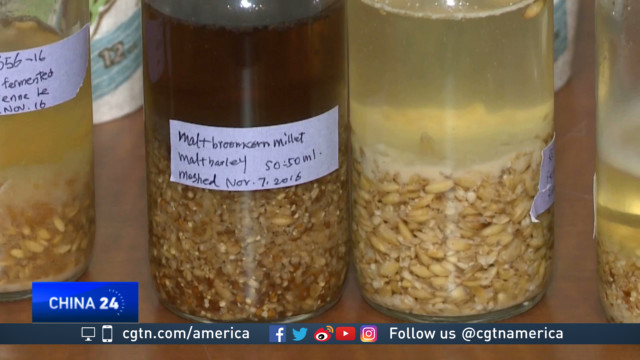Beer isn’t a new phenomenon. In fact, the beverage’s history — dates back thousands of years. And students in California are bringing back some ancient brews.
CGTN’s Mark Niu was there to get a taste of history.

At the Mijiaya excavation site in Shaanxi Province in Northern China, remnants of these pottery vessels were discovered.
And at Stanford University in California, Professor Liu Li and researcher Jiajing Wang have determined they were part of a beer-making toolkit.
There are microscopic starch grains from the site – an ancient beer recipe – that includes millet, yam and snake gourd root and a type of branched grass called Job’s Tears.
And finally – barley.
“Barley is rather surprising because before our study normally archaeologists believe barley was introduced to China about 4000 years ago, but our pottery date to 5000 years ago. And the function of beer is more than just regular food, involved a more social complexity like social hierarchy, elite use of alcohol to gain power and maintain power,” said Liu Li, a Chinese Archaeology Professor at Stanford University.
In Professor Liu’s Archaeology of Food class, power fell into the hands of students, who used ingredients from the 5,000-year-old recipe to make their own beer.
Students made various concoctions and researchers experimented with unique recipes. The beer was typically sipped with a straw in ancient cultures. The flavorful drink has a little bit of both sourness and of sweetness. Some ingredients may even offer medicinal value.
In fact, Lucky Envelope Brewing in Seattle has already taken the recipe and brewed its own Mijiaya Historic Chinese Beer.
The brewmaster there says initial curiosity has given way to customers regularly asking when it’ll be back on tap.
It’s an ancient recipe that’s proving to be rife for appreciation and experimentation.
 CGTN America
CGTN America

